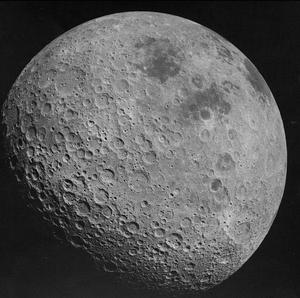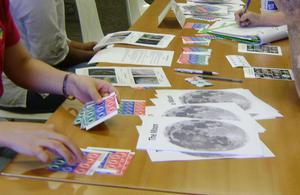Glossarbegriffe: Krater
Description: Ein Krater ist eine kreisförmige Vertiefung auf der Oberfläche eines erdähnlichen Planeten, Mondes oder eines anderen kleinen Objekts im Weltraum. Einige Krater sind vulkanischen Ursprungs, insbesondere auf der Erde und der Venus. Die meisten Krater sind aber Einschlagskrater, die durch den Einschlag eines astronomischen Objekts wie eines Asteroiden oder eines Kometenkerns verursacht wurden. Es gibt Dutzende von Einschlagskratern auf der Erdoberfläche und Tausende auf dem Mond. Die Mare, die großen, dunklen, kreisförmigen Tiefebenen auf dem Mond, sind riesige Einschlagskrater, die vor Milliarden von Jahren entstanden sind und sich dann mit Lava füllten, die sich seitdem verfestigt hat.
Zugehörige Glossarbegriffe:
See this term in other languages
Term and definition status: The original definition of this term in English have been approved by a research astronomer and a teacher The translation of this term and its definition is still awaiting approval
The OAE Multilingual Glossary is a project of the IAU Office of Astronomy for Education (OAE) in collaboration with the IAU Office of Astronomy Outreach (OAO). The terms and definitions were chosen, written and reviewed by a collective effort from the OAE, the OAE Centers and Nodes, the OAE National Astronomy Education Coordinators (NAECs) and other volunteers. You can find a full list of credits here. All glossary terms and their definitions are released under a Creative Commons CC BY-4.0 license and should be credited to "IAU OAE".
Zugehörige Medien
Ceres
Bildnachweis: NASA / JPL-Caltech / UCLA / MPS / DLR / IDA / Justin Cowart
License: CC-BY-2.0 Creative Commons Namensnennung 2.0 Generic icons
Related Activities
Impact Craters
astroEDU educational activity (links to astroEDU website) Description: A literal Earth-Shattering experimentLicense: CC-BY-4.0 Creative Commons Namensnennung 4.0 International (CC BY 4.0) icons
Tags: History , Impact , Experiment Age Ranges: 10-12 , 12-14 , 14-16 Education Level: Middle School , Primary , Secondary Areas of Learning: Guided-discovery learning , Modelling , Traditional Science Experiment Costs: Low Cost Duration: 1 hour Group Size: Group Skills: Analysing and interpreting data , Asking questions , Constructing explanations , Engaging in argument from evidence , Using mathematics and computational thinkingMeteoroids, Meteors and Meteorites
astroEDU educational activity (links to astroEDU website) Description: Unveiling the mystery of "shooting stars": meteors, meteorites and meteroidsLicense: CC-BY-4.0 Creative Commons Namensnennung 4.0 International (CC BY 4.0) icons
Tags: Geology Age Ranges: 6-8 , 8-10 , 10-12 , 12-14 Education Level: Middle School , Primary Areas of Learning: Interactive Lecture Costs: Low Cost Duration: 1 hour 30 mins Group Size: Group Skills: Analysing and interpreting data , Asking questions , Communicating information , Engaging in argument from evidenceAge that crater!
astroEDU educational activity (links to astroEDU website) Description: Learn how to age craters with this Predict, Explain, Observe, Explain Activity!License: CC-BY-4.0 Creative Commons Namensnennung 4.0 International (CC BY 4.0) icons
Tags: Craters , Game , Maps , Geology Age Ranges: 4-6 , 6-8 , 8-10 Education Level: Middle School , Primary Areas of Learning: Observation based , Social Research Costs: Low Cost Duration: 1 hour Group Size: Group Skills: Asking questions , Communicating information , Constructing explanations , Developing and using models , Engaging in argument from evidence











